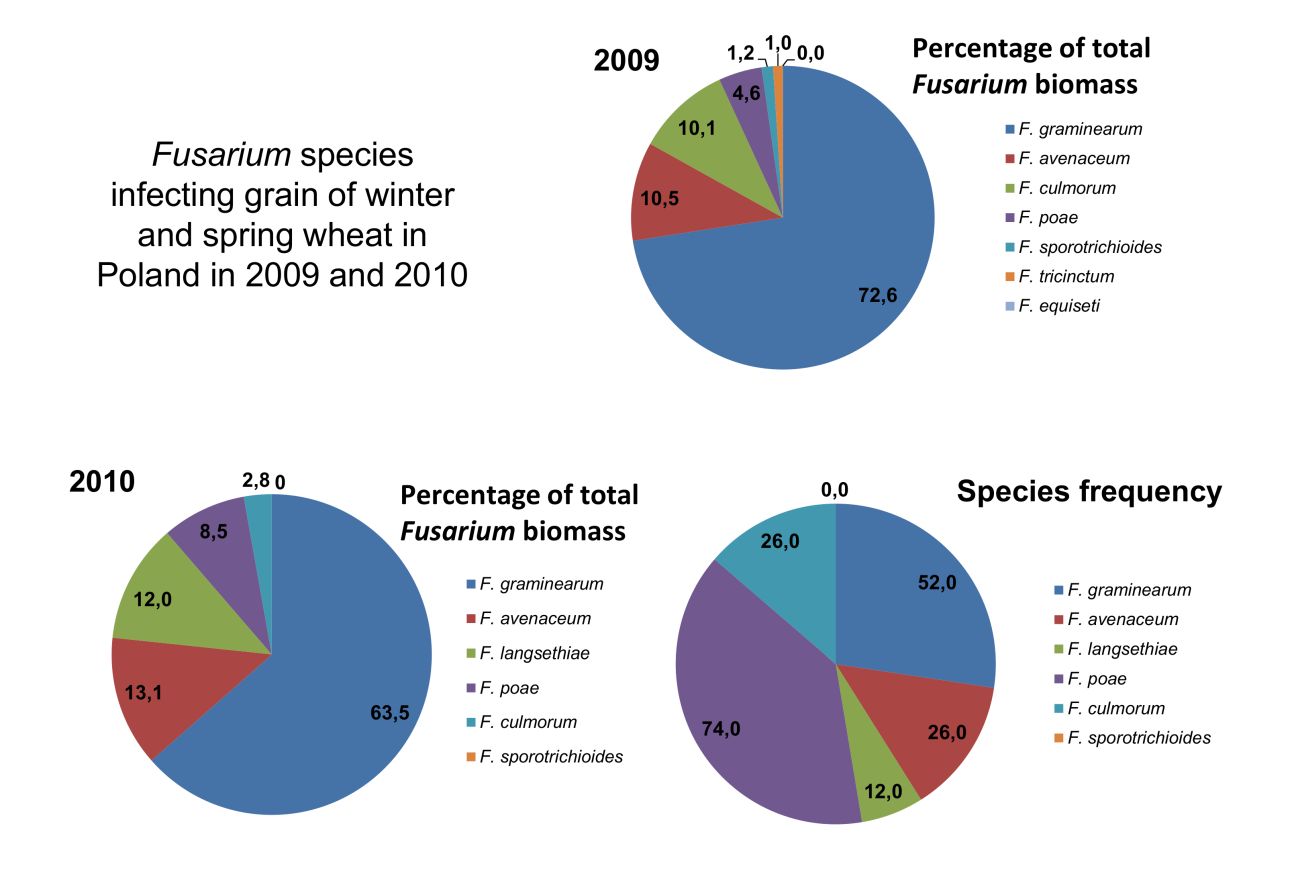The aim of the study was to determine the presence Fusarium species and mycotoxins in winter wheat grain in Poland. Grain samples from different locations in Poland in 2009 and 2010 were analysed for the content of biomass of Fusarium species and mycotoxins. In 2009 biomass of F. graminearum and F. poae was present in all samples, F. culmorum in 82% of samples, F. avenaceum in 55% of samples. F. sporotrichioides, F. tricinctum and F. equiseti were found only in individual samples. F. langsethiae was not detected. In 2010, five Fusarium species were detected with the exception of F. sporotrichioides. The highest content of biomass was found for F. graminearum followed by F. avenaceum, F. poae and F. langsethiae. The amount of F. culmorum biomass was very low. The most frequently occurring species was F. poae and F. graminearum. In 2009, deoxynivalenol was detected in all samples. In 2010, the average content of deoxynivalenol was lower than in 2009. Nivalenol was detected at very low concentration in both years. Significant correlations between content of F. graminearum biomass and deoxynivalenol concentration in grain and between content of F. poae biomass and nivalenol concentration in grain in 2009 were found. The most important finding of this study was that main Fusarium species infecting wheat kernels in Poland in both years was F. graminearum. The amount of biomass of F. graminearum was the highest in both years. It was present in the most samples. The other frequently detected species was F. poae, which in 2010 appeared in more samples than F. graminearum. However, the amount of F. poae biomass was lower. F. culmorum, species that was previously dominating as wheat pathogen in Poland, was found less frequently than F. graminearum. The amount of biomass of this species was the lowest in 2010.

